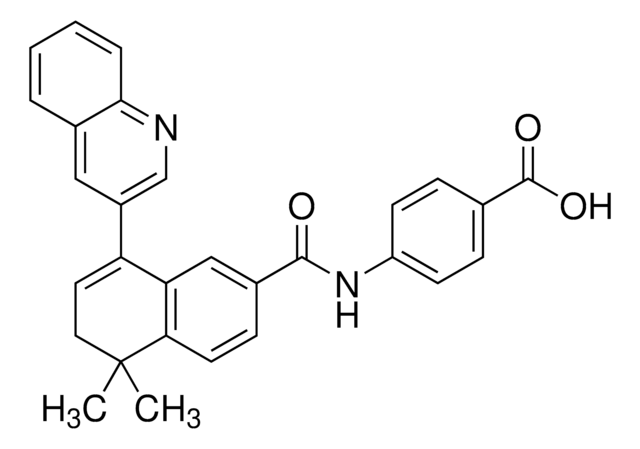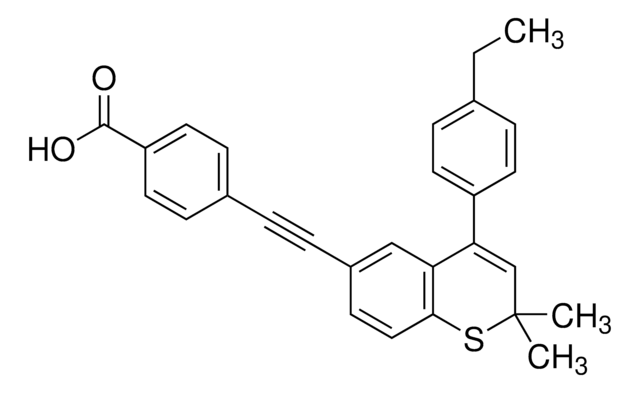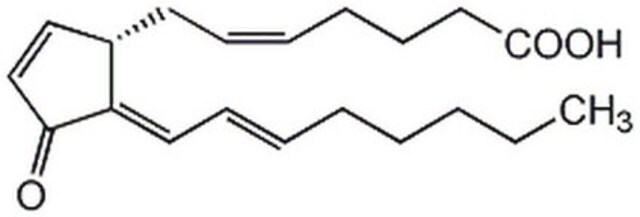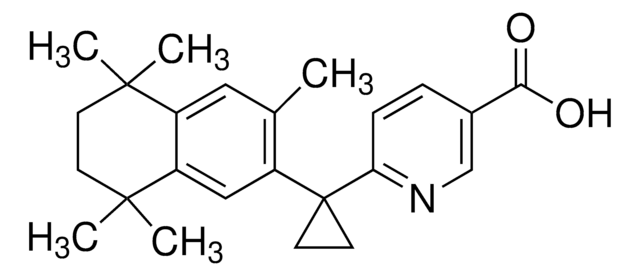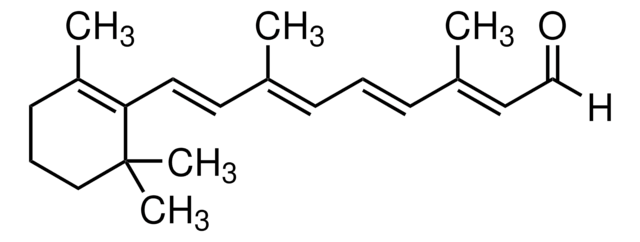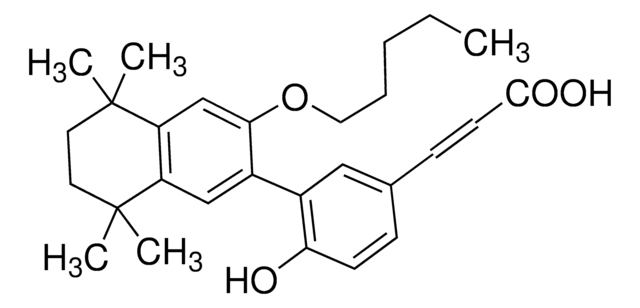Key Documents
B6688
BMS 493
≥98% (HPLC), powder, pan-RAR inverse agonist
Synonim(y):
(E)-4-[2-[5,6-Dihydro-5,5-dimethyl-8-(2-phenylethynyl)naphthalen-2-yl]ethen-1-yl]benzoic acid, 4-[(1E)-2-[5,6-Dihydro-5,5-dimethyl-8-(phenylethynyl)-2-naphthalenyl]ethenyl]-benzoic acid, BMS204, 493
About This Item
Polecane produkty
product name
BMS 493, ≥98% (HPLC)
Próba
≥98% (HPLC)
Postać
powder
kolor
light yellow to yellow
rozpuszczalność
DMSO: ≥20 mg/mL
inicjator
Bristol-Myers Squibb
temp. przechowywania
2-8°C
ciąg SMILES
CC1(C)CC=C(C#Cc2ccccc2)c3cc(\C=C\c4ccc(cc4)C(O)=O)ccc13
InChI
1S/C29H24O2/c1-29(2)19-18-24(14-10-21-6-4-3-5-7-21)26-20-23(13-17-27(26)29)9-8-22-11-15-25(16-12-22)28(30)31/h3-9,11-13,15-18,20H,19H2,1-2H3,(H,30,31)/b9-8+
Klucz InChI
YCADIXLLWMXYKW-CMDGGOBGSA-N
Opis ogólny
Zastosowanie
- as an inhibitor for the dietary and pharmacologic manipulation of retinoic acid (RA) activity in vivo and in vitro
- for human induced pluripotent stem cells (iPSCs) culture and ventricular cardiomyocytes (VCMs) differentiation
- to inhibit retinoic acid (RA) signaling in explants
- as a retinoic acid receptor (RAR) inhibitor for the induction of synaptonemal complex protein 3 (SCP3) and ATP-dependent RNA helicase (DDX4) in primordial germ cells (PGCs)
Działania biochem./fizjol.
Cechy i korzyści
Kod klasy składowania
11 - Combustible Solids
Klasa zagrożenia wodnego (WGK)
WGK 2
Temperatura zapłonu (°F)
Not applicable
Temperatura zapłonu (°C)
Not applicable
Certyfikaty analizy (CoA)
Poszukaj Certyfikaty analizy (CoA), wpisując numer partii/serii produktów. Numery serii i partii można znaleźć na etykiecie produktu po słowach „seria” lub „partia”.
Masz już ten produkt?
Dokumenty związane z niedawno zakupionymi produktami zostały zamieszczone w Bibliotece dokumentów.
Klienci oglądali również te produkty
Produkty
We offer many products related to non-steroid nuclear receptors for your research needs.
Nasz zespół naukowców ma doświadczenie we wszystkich obszarach badań, w tym w naukach przyrodniczych, materiałoznawstwie, syntezie chemicznej, chromatografii, analityce i wielu innych dziedzinach.
Skontaktuj się z zespołem ds. pomocy technicznej